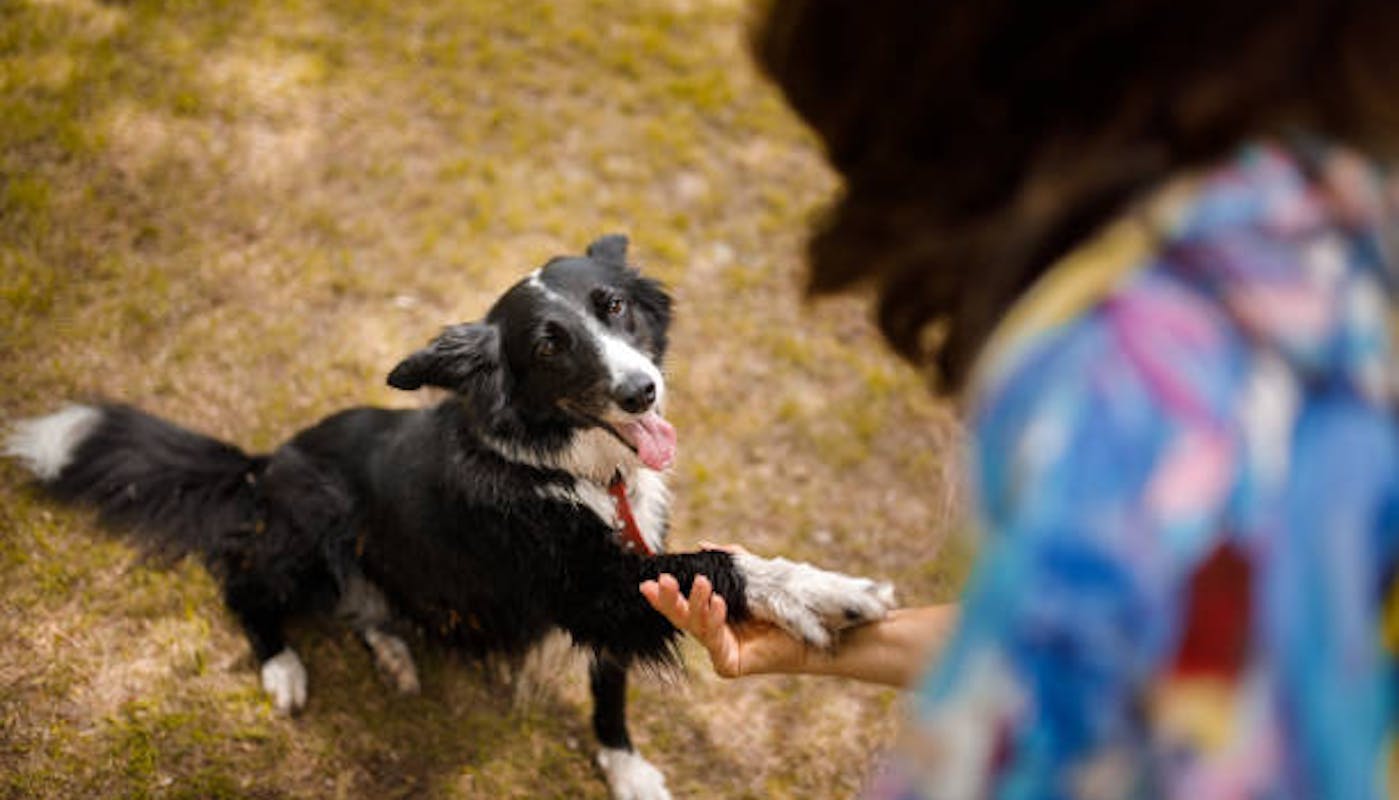How to Teach a Dog Paw
Every responsible dog owner understands the importance of training but this doesn’t mean it’s not a daunting task if it’s new to you. Some commands are more important for your dog's safety than others; teaching your dog to recall, drop it and even sit could save their life or at least, a trip to the vets.
If you’re new to training, ‘paw’ is a good beginner trick to learn. It helps reinforce the bond between dog and human and helps you both with understanding how to communicate with one another.
The reason ‘paw’ is such a good beginner trick is because it’s such a natural action for your dog, especially if they’re still a puppy. There are lots of theories as to why it’s so instinctive for a dog to place their paw on you, but most suggest it’s a sign of affection. They might place a paw on you because they want you to give them attention. They might offer a paw in reciprocation of you giving them affection.
How To Teach a Dog Paw
Once you've adopted a pet, you need to develop the training skills/learn/dog-training/positive-reinforcement-training-for-dogs you'll need for the rest of your relationship. To do this, you should first figure out what kinds of rewards your dog responds to.
Finding the Right Treats
While it's easy to head to any pet store and grab a bag of cheap treats from the shelf, this usually isn't the best thing for your dog. Inexpensive, low-quality treats are packed with highly-processed animal proteins and fats that gum up dogs' intestines and shorten their lifespans. Some even include ingredients known to be toxic to dogs.
The best treats for training are those that are both healthy and exciting. This ensures that your pet will associate good behavior with a strong reward instead of a weak one. This can shorten training periods significantly.
Once you’ve found their favorite treat, keep it reserved for training sessions. It not only helps reinforce the association between the snack and the action of training, but it stops them getting too used to it.
Training Paw
To train paw, start in a quiet area free of distractions. Have your pup sit or find them when they are already sitting. Present your exciting treat so they know you have it.
Sometimes, dogs naturally offer their paw in an attempt to try to get you to drop the treat in your hand. If this happens, give them the treat immediately and provide enthusiastic praise. It’s important to make sure you’re using your training world (like ‘paw’) and you use it every time they give you their paw and you give them the reward. If you don’t use the training word consistently, your dog is training you! They’ll learn that to get a treat, they simply have to bat at your hand with their paw which they’ll soon start doing every time you have something they want to eat.
If your buddy remains stoically unmoved, you can begin to hint at what you want. Place the treat in front of their face with one hand closed around it, and use the other hand to reach behind one forepaw. Inevitably, your confused pooch will lift the paw in the air. Praise, reward, and repeat as many times as you need.
How To Teach a Dog Paw if They're an Anxious Rescue
Rescue animals need to feel comfortable before you can train them. You can think of your pet's needs like Maslow's hierarchy of needshttps://www.simplypsychology.org/maslow.html — security comes before higher thinking.
Food and security are two basic needs you can provide for your buddy. Build trust by giving positive reinforcement and avoiding punishment. Let them know that you won't hurt them, no matter what. Give them food and praise both randomly and when they're doing something good. In a little time, you'll have an eager companion ready to begin training.
The single best way to show a nervous rescue dog they can trust you is to just sit next to then. Sitting above them tells them you’re dominating them but if you simply sit beside them, they’ll view you as quite literally, on their level. Don’t make eye contact, or even talk to them. Read a book, browse the internet on your phone, do some knitting - just sit there quietly and calmly. The more you do this, the more your rescue dog will learn nothing bad happens when you’re nearby. After a while, leave a nice treat by your side, eventually leave it in your open hand and they’ll learn that your company means snacks.
Now you've got their trust, introducing some training will help grow your new bond. Start with come and sit, then move to paw. If they aren't responding, let them relax a little and try again — they might just be overstimulated.
Learning how to teach a dog paw is only the beginning of your pet-owning odyssey. As you earn compliance and build your relationship, you can proceed to complicated maneuvers like "roll over" or "bring."
